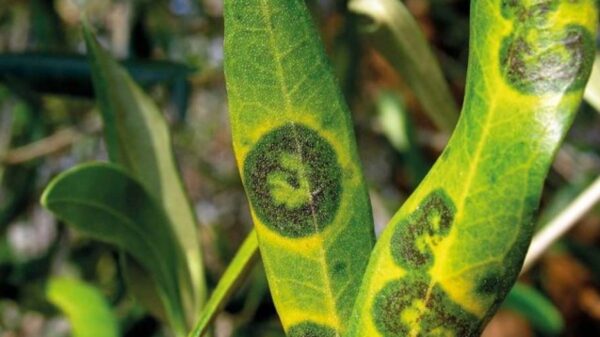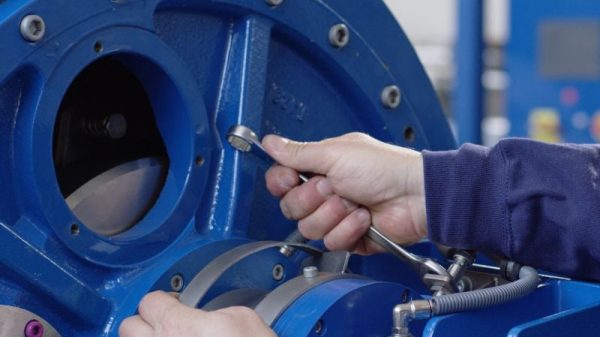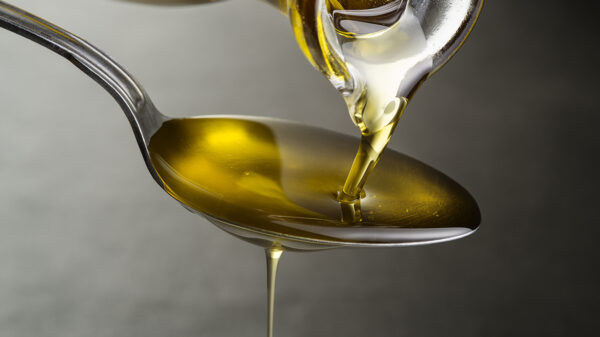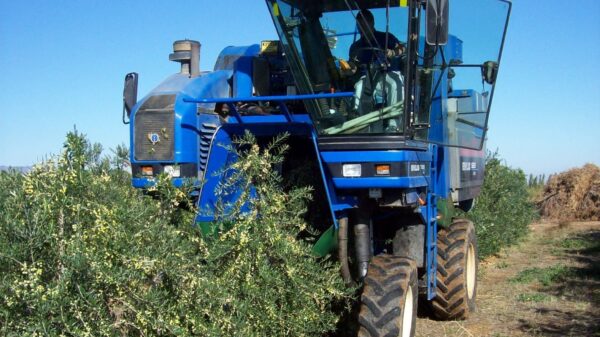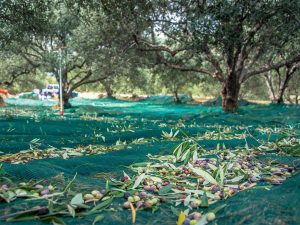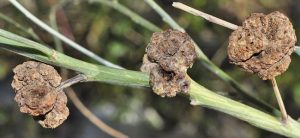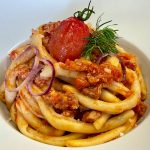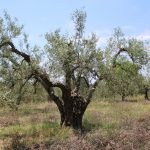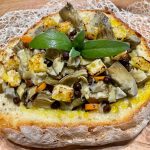In the collective experience of those involved in olive growing, the kaolin has always been associated with its effectiveness against the fly. The results, on the other hand, confirm this thesis, especially where one is in the presence of pure rock, ie with the highest percentage of the reference mineral, i.e. kaolinite, and the highest possible white color gradation.
In recent times, however, the awareness that this material is particularly noticeable is gaining ground also effective in protecting the plant against heat and drought, helping to ensure greater production performance.
In fact there was already a search for theDamascus University (Syria) which by now twenty years ago had certified, data in hand, this effectiveness. The study, published in a scientific journal, had in fact highlighted that the application of the film of kaolin particles on the olive grove had led to a increase significant of 17,6% of the surrender of fruits. How? Increasing the weight, length and diameter of the drupes. In particular, it was found that in the trees sprayed with kaolin, these values had increased respectively by 14,55% (weight), the 6,15% (length) and 5,92% (diameter). The calculated production of tree oil, taking into account the yield and the oil content, had been of 7,90 kg compared to 6,03 kg of trees not sprayed with kaolin. The same research had also highlighted, from a chemical and organoleptic point of view, a greater presence of polyphenols (the concentration of which is strongly correlated by the photosynthesis activity of plants, climate, heat, drought stress) and a smaller number of peroxides.
The interest in this study was the basis of a survey conducted by the company Clay & Clay, owner of the brand AgriBioClay, among its customers, which has provided extremely interesting results and new interpretations.
 Domenico Bucca, sales engineer of Clay & Clay (in the picture) analyzes them in detail. “From the survey we have conducted, it has emerged that in most cases they are carried out to the maximum three treatments of kaolin per year. This means that there are those who even reach five and those who limit themselves to just one. In the latter case, it is quite clear that the kaolin is used against the flyand by not focusing attention on the properties of this type of clay under other profiles as well. After all, when asked what were the objectives one wanted to achieve by protecting one's plants with kaolin, a question to which it was possible to provide multiple answers, the86,5% stated that it aimed at protect the olive tree from the fly, but also alleviate water suffering (75,7%) ed avoid sunburn (64,9%). Minor percentages have obtained the purposes related to decrease the drop (23%), increase the size of the olives (10,8%), improve the quality of the oil (24,3%). The answers - notes Bucca - indicate that the majority of olive growers see kaolin as a product for defense against the olive fly, that the perception of the use of the product to defend against solar radiation is however growing, but that it is still poor understanding and perception what are the practical advantages for the cultivation of the olive tree and the production of oil.
Domenico Bucca, sales engineer of Clay & Clay (in the picture) analyzes them in detail. “From the survey we have conducted, it has emerged that in most cases they are carried out to the maximum three treatments of kaolin per year. This means that there are those who even reach five and those who limit themselves to just one. In the latter case, it is quite clear that the kaolin is used against the flyand by not focusing attention on the properties of this type of clay under other profiles as well. After all, when asked what were the objectives one wanted to achieve by protecting one's plants with kaolin, a question to which it was possible to provide multiple answers, the86,5% stated that it aimed at protect the olive tree from the fly, but also alleviate water suffering (75,7%) ed avoid sunburn (64,9%). Minor percentages have obtained the purposes related to decrease the drop (23%), increase the size of the olives (10,8%), improve the quality of the oil (24,3%). The answers - notes Bucca - indicate that the majority of olive growers see kaolin as a product for defense against the olive fly, that the perception of the use of the product to defend against solar radiation is however growing, but that it is still poor understanding and perception what are the practical advantages for the cultivation of the olive tree and the production of oil.
And yet – adds the Clay & Clay technician – asking if he could protect plants from water stress, only 8,3% answered negatively, compared to a 63,9% which provided a positive answer (the remainder had an irrigation system or replied that the plants did not suffer).
Furthermore, among that 23% who said they used kaolin for contain the drop, when asked if he had managed to achieve this goal, 90% answered yesand an 10%finally noted that the size of their olives was increased by at least 20%".
What result can be drawn from this survey? “We believe – admits Bucca – that communication needs to be improved because the risk is that olive growers lose the overall vision. In the income statement of an olive farm, in fact, the investment in the kaolin accounts for approximately 5% of total costs of management for the production of oil net of storage, packaging and marketing costs, but the effect of the higher yield in terms of production can guarantee an increase in turnover of up to 34%. A value that increases drastically if we then consider the difference in the price of sale to the public of organic extra virgin olive oils without defects”.


